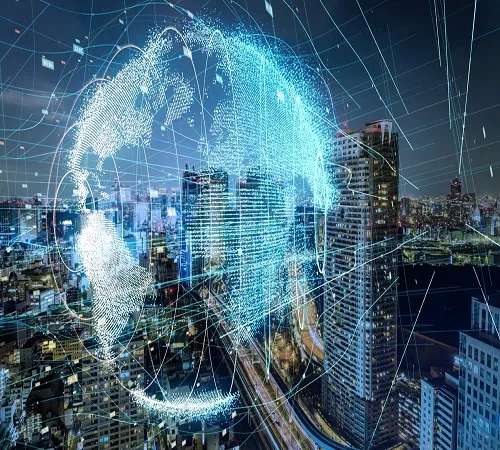
The spatial web, also known as the spatial Internet or spatial computing, refers to the integration of spatial information and geospatial technology into the web and other digital technologies. It involves the use of geographic information systems (GIS), global positioning systems (GPS), and other spatial advancements to create interactive, location-based services and applications.
This allows users to access and interact with geospatial data, such as maps, satellite imagery, and GPS data, in a way that is seamlessly integrated with the web. This enables new forms of interaction and collaboration, such as location-based social networking, spatial data sharing, and map-based search and navigation.
Some examples of the spatial web include:
- Maps and mapping services: Online maps and mapping services, such as Google Maps and MapQuest, allow users to view and interact with spatial data, such as maps and satellite imagery.
- Location-based services: Location-based services, such as Foursquare and Facebook Places, use GPS and other spatial technologies to provide users with information and services based on their location.
- Spatial data sharing: The spatial web enables the sharing and collaboration of spatial data, such as maps, GPS data, and other geospatial information, between different users and organizations.
- Map-based search and navigation: Map-based search and navigation services, such as Google and Apple Maps, allow users to search for and navigate to locations using maps and GPS data.
- Augmented reality: Augmented reality (AR) technology, which overlays digital information onto the real world, is becoming increasingly popular in applications such as gaming, education, and retail.
However, here's a breakdown of what it generally refers to:
- The line between the physical and digital world blurs: Physical spaces get infused with digital data and information, while virtual worlds become increasingly immersive and realistic.
- We interact with information and each other spatially: Instead of clicking and scrolling through flat screens, we navigate and access information in 3D spaces using various technologies like virtual reality (VR), Augmented Reality (AR), and Mixed Reality (MR).
- The web becomes three-dimensional: websites and platforms transform into interactive spatial environments where users can move around, explore, and engage with content in a more natural and intuitive way.
- Everything around us becomes connected and intelligent: From buildings and furniture to everyday objects, everything is embedded with sensors and connected to the internet, enabling real-time data collection and analysis.
This is the essence of the Spatial Web: a paradigm shift in how we experience and interact with the web, with a focus on spatial awareness, natural interaction, and a seamless blend of the physical and digital worlds.
Key technologies enabling the Spatial Web:
- VR/AR/MR: These technologies provide immersive and interactive experiences in both real and virtual environments.
- Artificial intelligence (AI): AI algorithms will power intelligent agents and chatbots, analyze data from connected devices, and personalize the Spatial Web experience.
- Internet of Things (IoT): Billions of connected devices will collect and share data, creating a rich digital layer over the physical world.
- Blockchain technology: Secure and decentralized platforms will enable ownership and exchange of digital assets in the Spatial Web.
Potential applications of the Spatial Web:
- Education: Immersive learning experiences provides education in virtual environments and interactive simulations.
- Healthcare: Remote surgery, virtual consultations, and personalized treatment plans based on real-time patient data.
- Retail and e-commerce: Try-before-you-buy experiences in AR, virtual showrooms, and personalized product recommendations.
- Travel and tourism: Explore different destinations virtually, attend events remotely, and receive personalized recommendations and assistance.
- Gaming and entertainment: Hyper-realistic VR games, interactive storytelling experiences, and virtual concerts and events.
Concerns:
- Privacy and Security: Maintaining user privacy and data security in an interconnected world will be crucial.
- Accessibility and digital divide: Ensuring everyone has access to the technology and experiences of the Spatial Web is essential.
- Ethical considerations: The integration of AI and data into our physical world raises ethical questions about agency, bias, and control.
The Spatial Web is still in its early stages, but it holds immense potential to revolutionize how we live, work, and interact with the world around us. It's important to stay informed and engaged in discussions about its development to ensure it benefits everyone and addresses potential challenges.